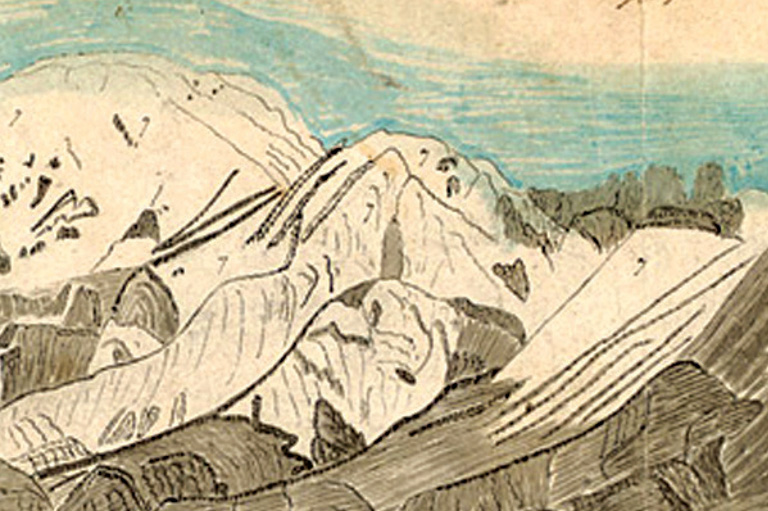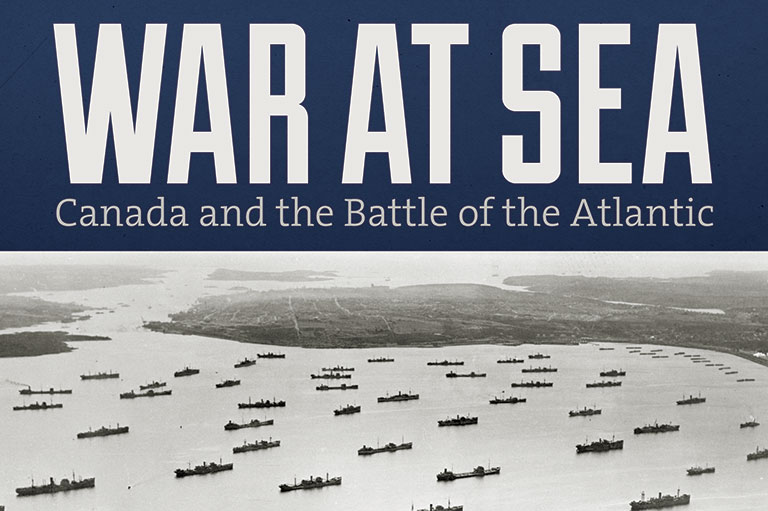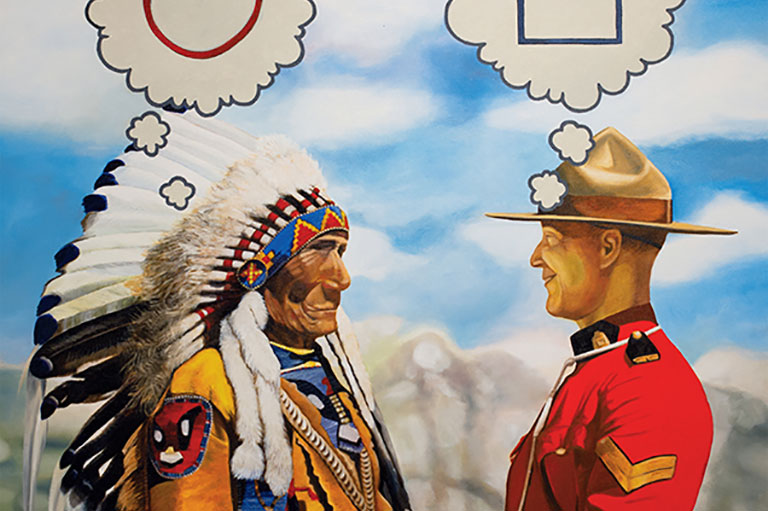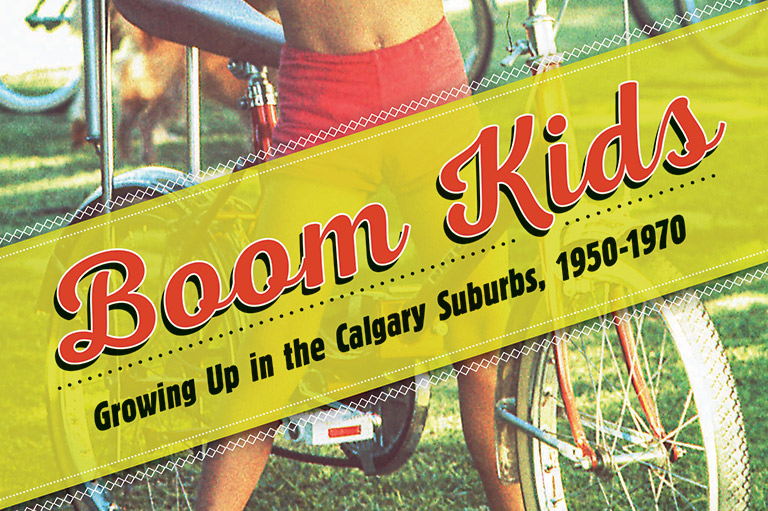Mining Country
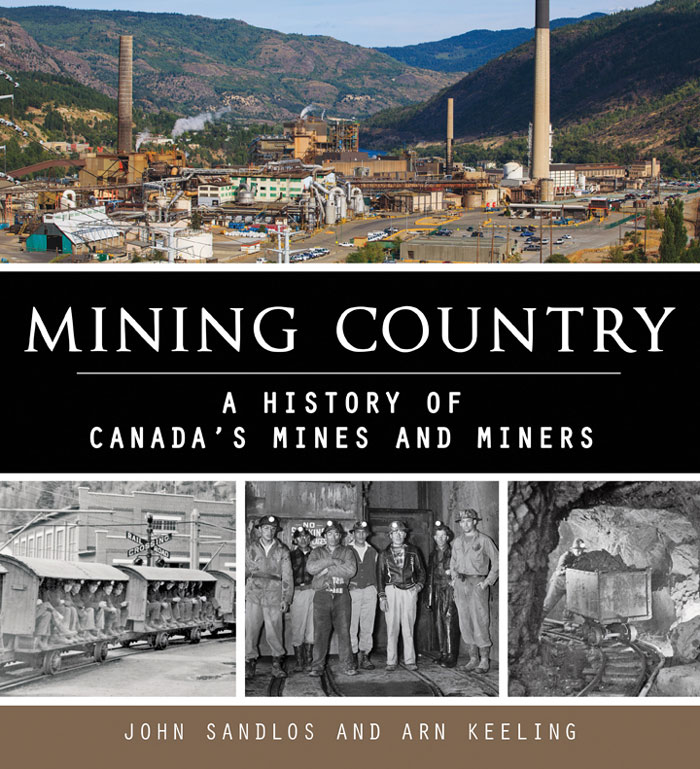
Mining Country: A History of Canada’s Mines and Miners
by John Sandlos and Arn Keeling
James Lorimer & Company
224 pages, $29.95
A double review with
Cobalt: Cradle of the Demon Metals, Birth of a Mining Superpower
by Charlie Angus
House of Anansi Press
336 pages, $24.99
Cobalt, Ontario, is the “cradle of Canadian mining,” suggests New Democrat Member of Parliament Charlie Angus as he describes in his book how the town’s silver rush in the early twentieth century gave rise to the Toronto Stock Exchange. While the authors of another recent book, Mining Country, agree that “Canadians owe a great deal to the mining industry,” they take a wider historical sweep in telling us why.
Angus’s book Cobalt is anecdotal and delightfully so. He is a storyteller who guides us through the highs and lows of a boomtown he describes as a “social disaster” mostly because of the “mercenary indifference on the part of corporate investors.” Early settlers, Indigenous people, later immigrants, and the environment were often the victims of “those who came to Cobalt to loot one of the great treasure boxes of the earth.”
Here are tales of amateur prospectors seeking, often hopelessly, the new El Dorado; the inevitable folly of the Wall Street panic of 1907 that brought the wealthy steel magnate Andrew Carnegie to town; and the inexorable advance of “Empire Ontario.” As Angus describes it, Cobalt was “a wily shape-shifter, promising either incredible wealth or fraud and ruin.”
Stories abound about the North West Mounted Police monitoring the local sex trade, the arrest of “high-graders” (ore thieves) who were seen by some as Robin Hoods, and the infamous Bucket of Blood saloon. We meet Big Bill Haywood of the radical Western Federation of Miners and get an outline of the history of the immigrants who were caught in the vortex of Cobalt’s social malaise.
John Sandlos and Arn Keeling include Cobalt in their more academic study Mining Country, but they also explore mining on a larger canvas while recounting the legacies of “a mining nation.” Their large-format book also includes dozens of photographs and illustrations. Uniquely, they begin with ancient Indigenous mining cultures and the environmental changes wrought by centuries of Indigenous mining.
Both books credit Indigenous people with finding the precious metals that lie beneath First Nations territory. However, Mining Country takes us deeper into the past with technical explanations of how the Indigenous copper economy worked. Its authors also demythologize some accounts of early explorers like Martin Frobisher, Canada’s “first European mining magnate” in 1577, and Samuel Hearne, whose quest for copper led to the Bloody Falls massacre of Inuit people in 1771.
Coal and iron deposits in New France supported colonial Canada’s first mining industry in the 1730s, and a “colony of miners” in Cape Breton, Nova Scotia, in the mid-1800s gave rise to an early union movement with a “fierce solidarity.” Out West, the authors note, mining booms were “characterized by social instability, aggressive displacement of Indigenous people and the sometimes violent confrontation of capital and labour.” The use of Asian workers “sparked controversy” and soon created a volatile strike situation. Gold and silver discoveries in the Klondike as well as in British Columbia’s Fraser Valley, Caribou, and Slocan regions in the late 1800s shared similarities with the Cobalt rush.
Neither Cobalt nor Mining Country romanticizes mining. Yes, images of gun-toting sheriffs, sourdough prospectors, and a bevy of dancehall girls are there, but they don’t detract from accounts of how the early rushes gave way to a new industrial landscape.
Mining “became synonymous with big business,” and with it came “dire social and environmental consequences,” as Sandlos and Kealing explain. Big mining and smelting operations, such as those in Sudbury, Ontario, or Trail, B.C., brought pollution and labour conflict. Cobalt, for example, remains one of the worst sites in Canada for arsenic pollution. Trail has long had a lead-pollution problem.
All the authors acknowledge the human cost of mining. As Sandlos and Keeling state, “hundreds, if not thousands, of sick and broken bodies could not keep the coal barons from pushing forward with business as usual.” Both books point to massive land appropriation, governments turning a blind eye, and corporate greed as significant factors in leaving the country pockmarked with ghost towns and “zombie mines.” At the same time, however, many of the needs of Canadians have been, and still are, furnished through mining.
Both Angus and the authors of Mining Country leave us with some hope that new technologies and new attitudes, along with lower consumer demand, offer solutions to curbing our reliance upon what Angus calls “demon metals.” Stricter regulations and better social and environmental studies of the impact of mining may also contribute, alongside binding agreements with First Nations that adapt mining to their knowledge of the land and its cycles.
These are two very different books about similar subjects. A politician wrote one, while a historian and a geographer wrote the other. One focuses on the history of an Ontario town; the other takes readers on a grand tour of most of Canada’s historic mining territory. Both books tell us much about our country and what we became as the mines made fortunes for some and left many communities in ruin.
With 7 uniquely curated newsletters to choose from, we have something for everyone.
Themes associated with this article
Advertisement

